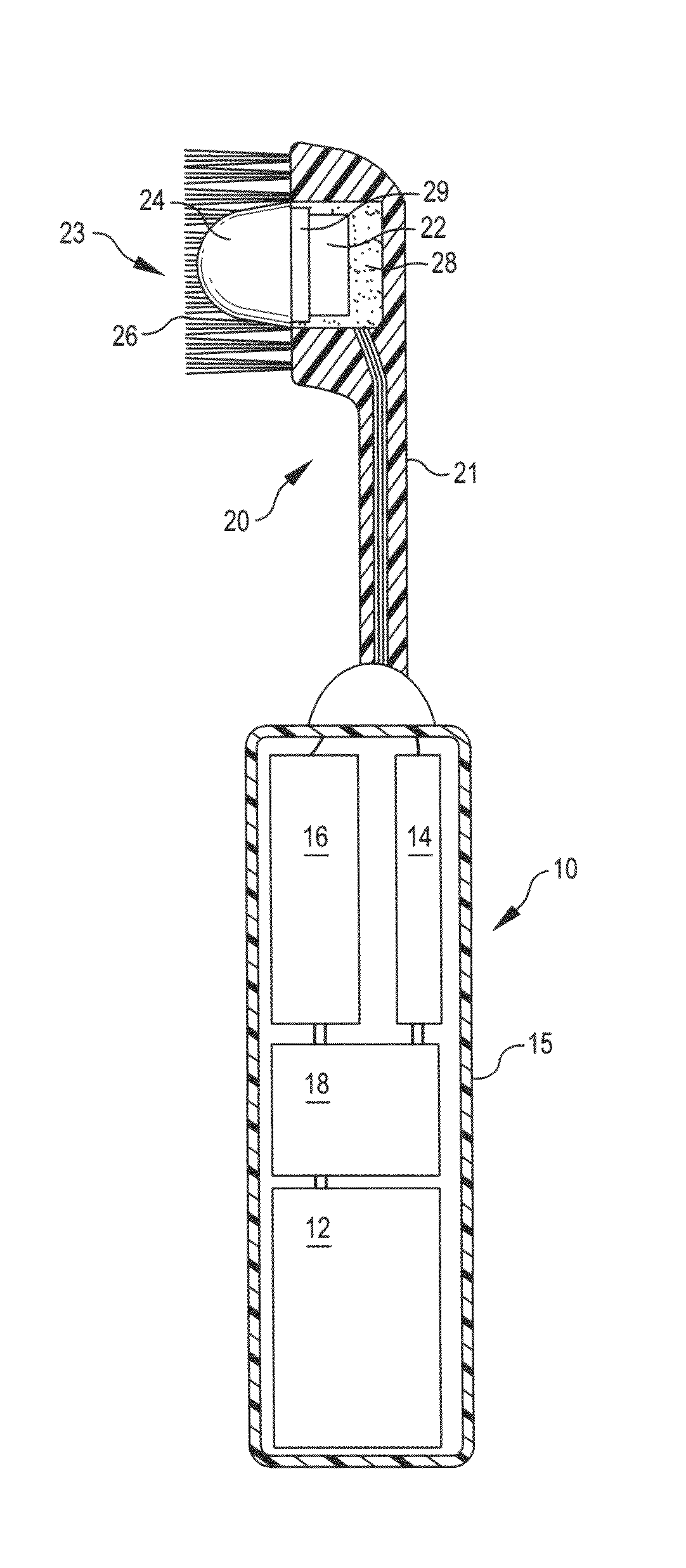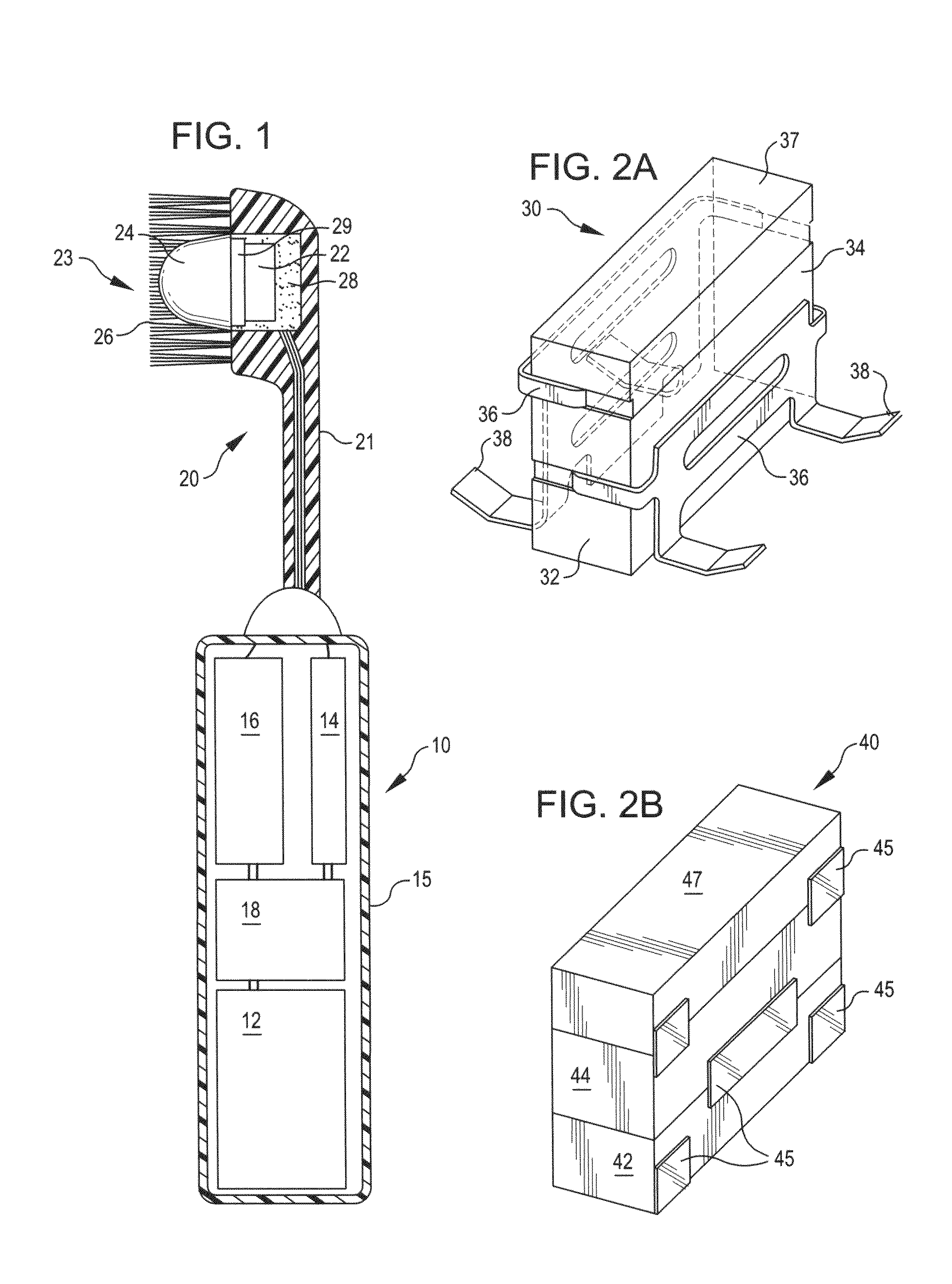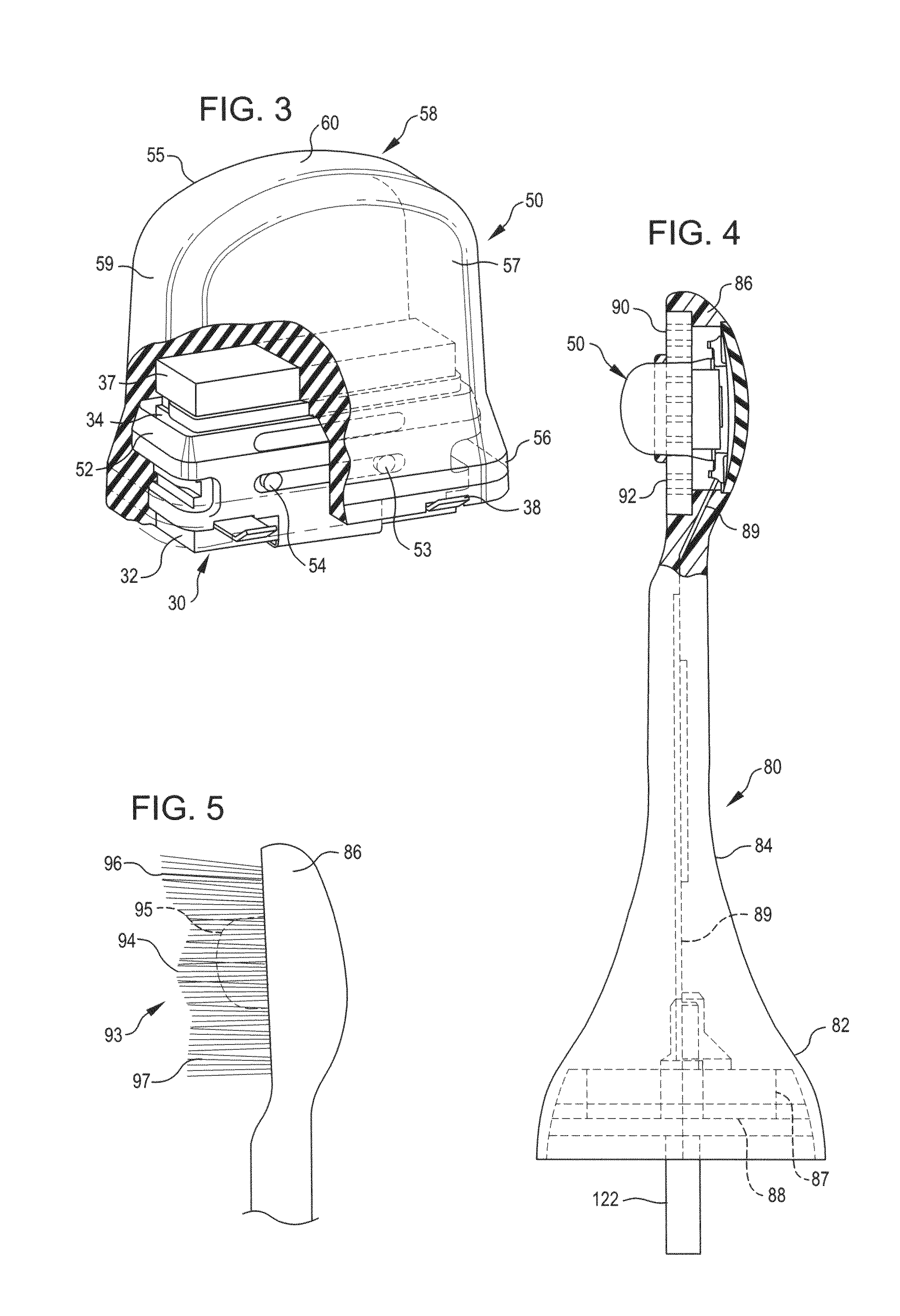Oral hygiene devices
a technology for oral hygiene and toothbrushes, applied in the field of oral hygiene devices, can solve the problems of toothbrushes that fail to exploit the ultrasound acoustic energy of ultrasound, toothbrushes that fail to consider microbubbles and macrobubbles as potential impediments to ultrasound propagation, and toothbrushes that disclose, etc., to achieve the effect of improving cleaning properties, disrupting biofilm, and affecting the feel
- Summary
- Abstract
- Description
- Claims
- Application Information
AI Technical Summary
Benefits of technology
Problems solved by technology
Method used
Image
Examples
example 1
Evaluation of Ultrasound as a Means to Remove Streptococcus mutans Biofilm
Objective:
[0265]To evaluate the ability of Ultreo's combined sonic and ultrasound processes to remove Streptococcus mutans biofilm.
Methods:
[0266]Dental plaque was modeled with an S. mutans biofilm grown (48 hours) on either hydroxyapatite (HA) discs (5 mm) or frosted glass slides with grooves (0.2 mm wide, 0.75 mm deep). The biofilm was exposed to one of 4 treatments: (a) Ultreo, (b) sonic brush (Sonicare Elite), (c) oscillating brush (Oral-B Triumph), or (d) control (Ultreo with ultrasound disabled). Additional surfaces were used for positive (biofilm with no treatment) and negative (no biofilm) controls. HA discs were positioned on average 3 mm from the active cleaning surface (bristle tips or ultrasound waveguide) within a dentifrice slurry. The surfaces of the grooved slides were directly brushed with the bristle tips within a dentrifice slurry. Biofilm was disclosed with either red or fluorescent dye prio...
example 2
Efficacy of Ultreo in Dental Plaque Removal
Objective:
[0271]To evaluate plaque removal efficacy of Ultreo after 1 and 2 minutes of brushing.
Methods:
[0272]In a 2-visit, examiner-blinded, crossover study, 33 subjects with a pre-brushing plaque score of ≧0.6 determined by the Refined Modified Navy Plaque Index (RMNPI) were enrolled. Subjects refrained from all oral hygiene 23-25 hours prior to all study visits and were randomly assigned to one of 2 treatment arms (Ultreo for 1 minute or 2 minutes). Pre- and post-brushing plaque scores were obtained, an intraoral examination (soft and hard tissue) performed, and a product evaluation questionnaire completed at each study visit.
Results:
[0273]Thirty-three subjects completed the study. The oral examination at each study visit indicated normal findings, and no adverse events were reported during the study. The percentage reduction in full mouth plaque (single brushing) was 86.0% and 87.6% after 1 and 2 minutes of brushing with Ultreo, respect...
example 3
Efficacy and Safety of Ultreo in a Population with Mild to Moderate Gingivitis
Objective:
[0279]To evaluate the efficacy and safety of Ultreo over a 30-day period in a population with mild to moderate gingivitis.
Methods:
[0280]This 30-day, randomized, examiner-blinded, parallel-arm study evaluated 53 subjects (n=26 Ultreo, n=27 Oral-B 35 manual toothbrush) with a minimum of 18 natural teeth and a Löe and Silness Gingival Index of ≧1.5. An intraoral examination (soft and hard oral tissues, restorations) and a Löe and Silness Gingival Index were recorded at baseline and 30 days. Subjects were instructed to brush at home twice per day with their assigned toothbrush and study toothpaste. A product evaluation questionnaire was also completed at the 30-day study visit.
Results:
[0281]The oral examinations indicated normal findings at all time points for both groups, and no adverse events were reported during the study. There were no significant differences in gingivitis scores at baseline betw...
PUM
 Login to View More
Login to View More Abstract
Description
Claims
Application Information
 Login to View More
Login to View More - R&D
- Intellectual Property
- Life Sciences
- Materials
- Tech Scout
- Unparalleled Data Quality
- Higher Quality Content
- 60% Fewer Hallucinations
Browse by: Latest US Patents, China's latest patents, Technical Efficacy Thesaurus, Application Domain, Technology Topic, Popular Technical Reports.
© 2025 PatSnap. All rights reserved.Legal|Privacy policy|Modern Slavery Act Transparency Statement|Sitemap|About US| Contact US: help@patsnap.com



